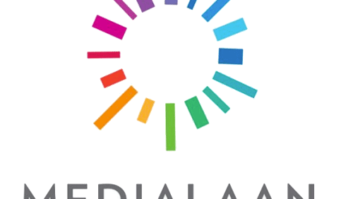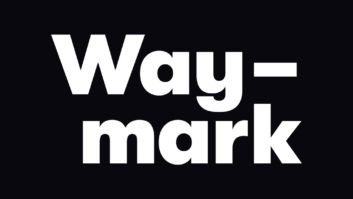LOS ANGELES — Don’t get me wrong — this was visual radio on a budget. But it got the job done.

I’m a Belgian radio host/producer living in Los Angeles and I hosted my weekly live radio show “#PeterQSA” out of L.A. for listeners in Belgium. The shows were broadcast by Belgian’s most popular commercial radio station Qmusic and on their national digital TV channel until the end of 2017. I’m now doing a morning show for Qmusic’s sister station, “Joe,” but the visual radio lessons I learned are relevant for anyone in radio — maybe even me and my future endeavors.
I’ve been working in radio since 1987, Q and I have been partners for 17 years now. For the first 14 years Belgium was my arena, but in 2014 I decided to move to Los Angeles and do my shows from out there. It was a move that earned me, surprisingly, a lot of respect in the national radio community, not only because doing a weekly live broadcast from abroad was — and still is — unheard of in Belgian radio, but mainly because at the same time it was also a TV show.
BANDWAGON
A few years ago Qmusic jumped on the visual radio bandwagon and started their own TV channel, not only giving viewers a 24/7 peek backstage into their studios, but also playing music clips and airing special concerts like the Qube, where artists are playing for a select crowd of fans. I realized that for my broadcast out of L.A. I could not simply show fans in Belgium a “Live From L.A.” billboard on their TV screen. At least I had to show them some kind of live footage from the studio.
Because I was personally paying for everything, this made the investment in studio equipment exponentially more complicated and more expensive. It also forced me to be more creative budget-wise. Moving to a different country on itself, which means securing a work visa, renting an apartment, buying furniture and getting everything, could easily drain one’s funds. On top of that I had to come up with a concept to glue radio and TV together in a way that both could be operated at the same time by me.

The center of the action: Studer 1500 mixer, OmniPlayer software, X-Keys XK-24 keypad for triggering video templates.
The heart of my radio studio is a 12-fader Studer 1500 digital mixing board that routes all of the audio. With today’s AoIP mixing boards and futureproof equipment, my small setup might be considered kind of old school by some. For the show I used the 1500 mixing board mostly for mobile purposes, but for me it fit my limited budget needs perfectly and it still does the job without any hassle. The Nano S-Core of the Studer handles all the audio inputs and outputs: three Shure SM7 mics; audio from radio automation software, jingles and music clips; Skype; a telephone hybrid and a multi-input switchable device for all other external audio.
To play music and jingles I use OmniPlayer, a Dutch playout software package for radio. The choice for OmniPlayer was a well-thought-out one because the program feels intuitive and user friendly, yet it is strong in architecture. It is not cluttered with technical settings and keeps the necessary parameters at your fingertips. The GUI is a dream to work with, smooth and fast, but extremely stable. The people of M&I Broadcast Services, the developers and distributors of OmniPlayer in Europe, installed the working software package remotely from The Netherlands on my computer in L.A. in less than two hours. I’ve been overjoyed with it.

The studio
On the video side the central nervous system of my video studio is a Blackmagic Design ATEM 2 M/E Production Studio 4K camera switcher that has taken in all the video sources and five camera feeds. I operated it manually during the show by myself. I’m stubborn in that way. I often made things more complicated than they should be by having two, sometimes three video sources active onscreen at the same time. I believe it made for a better viewer experience.
Let’s say for example, when I was about to do a Skype conversation, I’d create some anticipation onscreen by showing multiple video sources on-air at the same time just before the interview: a music clip playing, a Skype window with the guest and my own radio studio, so viewers could see what was coming up. To utilize these types of scenes with multiple video sources quickly, several templates were created in a program called JustMacros. Using those scripts JustMacros can operate the ATEM camera switcher remotely. With the help of an X-keys XK-24 24-button keypad I had 24 templates or scenes at my fingertips.
To play music clips I used Serato Video, a software mostly used by DJs in clubs and at festivals. I’m aware that there are other solutions to play music clips in a visual radio environment, but for me Serato Video was the most cost-effective and simplest way. Serato is superfast in handling and it enables users to pin multiple cue points on a video file so they can be accessed quickly.

The Blackmagic Design ATEM camera controller tops the rack equipment.
“LOCAL” CALLS
Hosting a show in L.A. for listeners in Belgium is one thing, to get the audio and video signal in real time over the Atlantic in a cost-effective way without spending thousands of dollars and with minimal delay is an entirely different story.
The format had to be 1080i/50 Hz for European television standards and also the audio had to be good enough quality to broadcast. I ended up with a WMT SL-25 from Mobile Viewpoint, a one-unit live encoder that can send H.264 HD video and AAC audio at 256 kbps across the globe with a delay of 2 seconds over the public internet. I fed the SL-25 video with the embedded main audio signal over an HD-SDI connection. I received return audio from the studio in Belgium with a 0.5-second delay so I could listen to the cue to start my show. I also used an IP audio encoder as a backup to transfer full quality audio in .WAV format to Belgium in case the WMT connection breaks down.
The idea of doing a live show from 6,000 miles away frightened some of my colleagues. They argued that it would isolate me from listeners’ interactions. However it has turned out that it’s the other way around.

Skype at work on the finished product — airing in Belgium.
From my studio in L.A. I have more ways to communicate with fans than in the main studio in Belgium. Via a VPN connection I was tapped into the telephone network of Qmusic in Belgium so I could literally make “local” calls out of L.A. to listeners in Belgium. I also used Facetime, Whatsapp and Facebook Messenger to talk to people on the air and I encouraged them to do video chats showing me their environments on the air. With today’s communications technology this couldn’t have been any easier: I just put a Skype video chat window full screen on a second extended desktop of my computer and sent it to the camera switcher. People watching the show could end up together with fans relaxing in Central Park in New York, in the streets of Lisbon, Portugal, next to someone jogging or lying in the sun on a beach in Brazil. I loved making the show as international as possible and giving it a “global” feel.
Though “#PeterQSA” was put on hold and I switched to a morning show for my employer, I still make use of the studio’s video tools on occasion.
What I learned however, is that hosting a show with music, interactions with listeners, playing video music clips and doing the camera switching at the same time can feel like driving two cars at the same time … in rush hour traffic. It was very challenging at times, because I was wearing all the hats at once, from producer to on-air host, to playlist creator, to camera switcher and technical assistant. After a show I’d be generally exhausted, but I feel that if you’re not worn out afterward, that if you haven’t tried to push the boundaries out of love for the medium, you didn’t give it your all.









